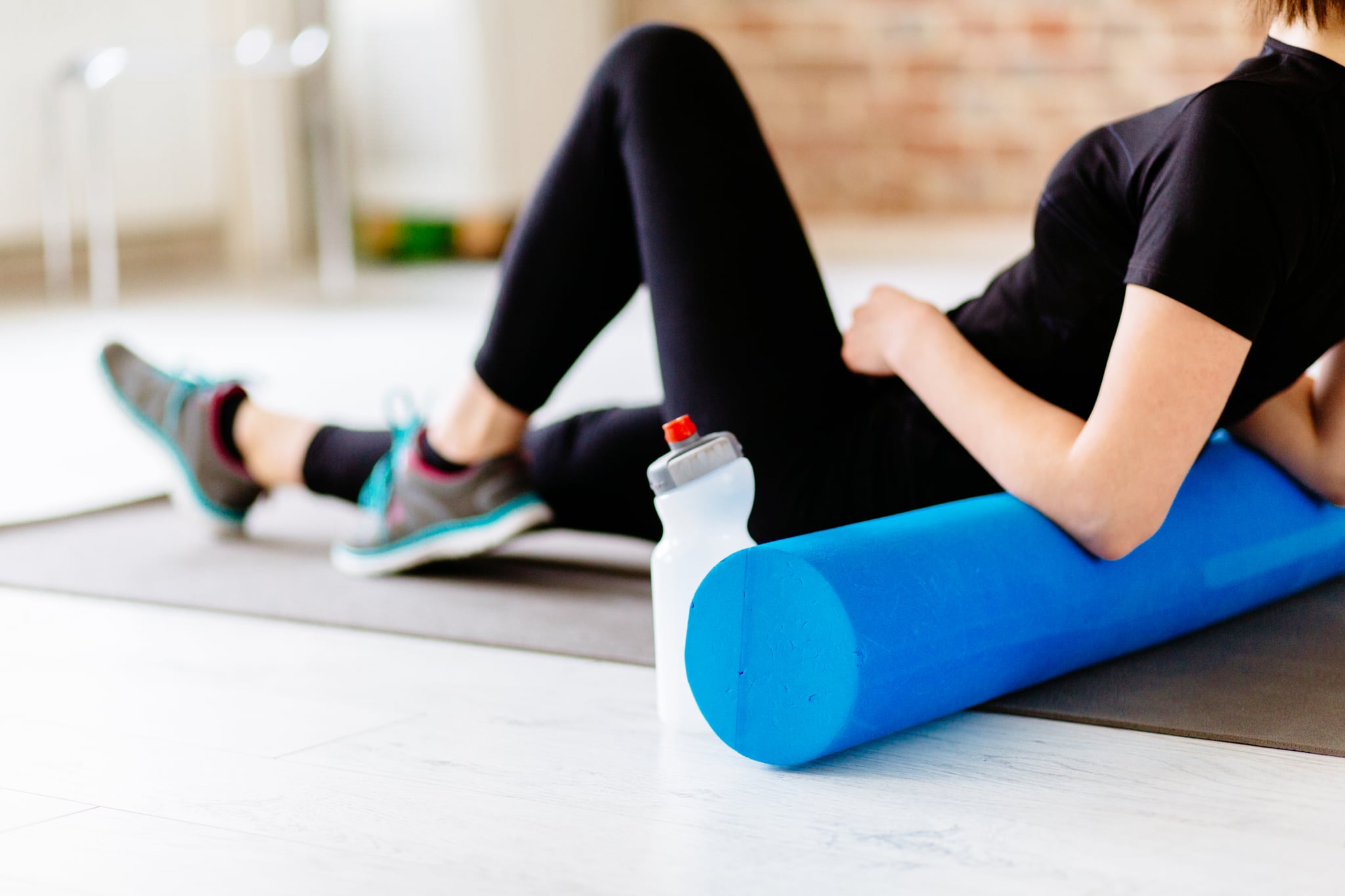
A foam roller is a favorite for those looking to ease muscle tension and knots post-workout session, but did you know it's also a valuable prop to have on hand during your workout, too? In fact, you can easily incorporate your foam roller into your next at-home workout for an added level of support for your feet, torso, and hands, according to Rachel Straub, MS, CSCS, co-author of Weight Training Without Injury. [1]
"You can use the foam roller to challenge your balance, work your core, upper body, and lower body," she says. "The options are really endless."
As you gear up for your at-home workout with the proper no-slip gear like the UA HeatGear® Armour Hi-Rise Capri [2] ($35) that's essential for active full-body workouts, start by also building a solid foam roller-based routine, such as a core flow. The core, commonly synonymous with abs, really refers to the 29 muscles surrounding your lumbar spine, explains Straub. This includes the abdominals, of course, but also the glutes and back muscles. Opting for a "core" workout using your foam roller can include various non-traditional core exercises that actually engage several large muscle groups beyond the abdominals, thus making for a well-rounded workout.
Squats
If you're confident in your balance abilities, you can stand on the foam roller and perform a bodyweight squat. Straub says you can perform this with one foam roller or two: however, this depends on your skill and comfort level. When completing a squat while balancing on your roller, don't allow your knees to cave inward, Straub says. Aim to squat until your thighs are parallel to the floor, and don't round your lower back. If you're less confident in your balance, try using the roller as an aid for a wall squat instead. Place the roller behind your back, between you and the wall. Perform your squat motion, rolling down into a squat position for an easier variation.
Push-Ups
To utilize a roller while doing a push-up, place the roller under your hands. Perform a standard push-up and lower your body until your elbows are at 90 degrees. Keep your lower back in proper alignment with no curving. You can also perform a push-up with the roller under your feet while you balance and lower into a push-up. "If you are unable to do a push-up on the floor, you may want to just start with a plank — or a push-up using a table — before attempting a push-up on the floor with a foam roller," cautions Straub. This can help you build up into the more advanced move.
Glute Bridge
To perform a glute bridge, lie on your back with the roller under your feet. Lift your hips off the ground while squeezing your glutes and abs, avoiding arching your lower back. Your knees, hips, and shoulders should be in a straight line while you hold the position and return to the floor.
Hamstring Curl on Back
"For the hamstring curl on your back, this is a good exercise to alternate with the bride, as you are already in position," says Straub. This move can be done using one leg or two and is usually performed with a stability ball, but a foam roller is a great alternative. To start, lie on your back with the foam roller under your feet. Simply curl the foam roller toward your body, lifting up at the hips. Maintain the hips off the ground as you roll inward and back out. As with the bridge, Staubs says to make sure you are lifting your hips using your glutes — not your lower back.
How Often Should I Work Out My Core?
"Given the wide spread of muscle that makes up the core, you should be incorporating some level of core exercises at least every other day," says Straub. Depending on the exercise, some simpler moves, such as the plank, can be completed daily. However, those core exercises that are more advanced and also target other regions, such as push-ups, are better suited for every other day, she adds.
What Kind of Roller Do I Need?
This is really up to you. But it can be important to keep the density and length of your roller in mind. For example, if your roller is too thin and not firm enough, standing on it for a squat may not be wise, says Straub. If your foam roller is short in length, you will have to place your hands closer together during a push-up thus making the exercise harder. So although there's no need to buy a particular roller, it's just important to modify your exercise choices to suit your equipment.
OK, but is using a roller safe?
Using a roller to assist with your bodyweight workouts is safe, but you need to be smart about it. Only perform the moves on the proper surface i.e. a smooth, flat surface so your roller doesn't slip. Evaluate your roller to confirm it's suitable for holding your weight. Some rollers may be dense enough to support but feature bumps or ridges, which would not be ideal for using during particular moves like push-ups. But the most important thing to keep in mind while performing a foam-roller workout is that a roller will increase the difficulty of your exercise, as it adds in an added layer of balance and stability required. Ultimately, Staub says you should confirm you can do the exercise properly without a foam roller first before attempting it with a roller.
